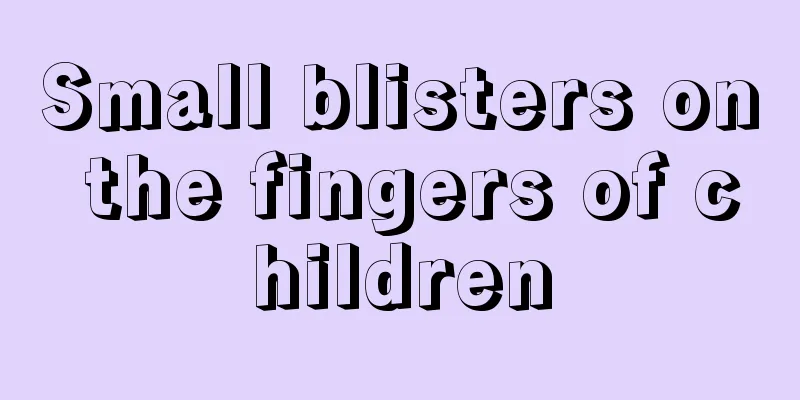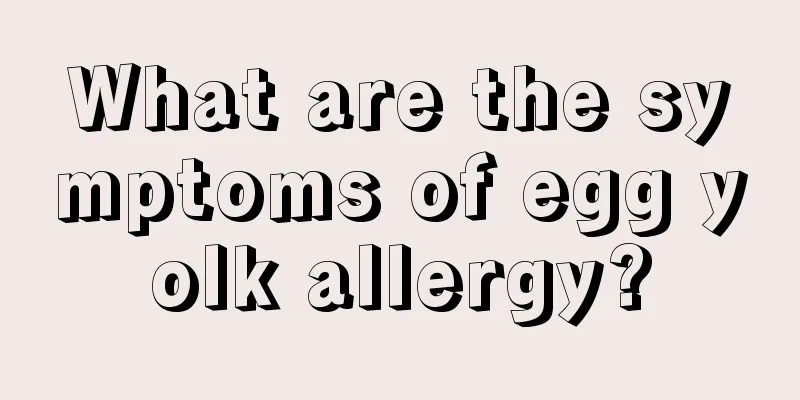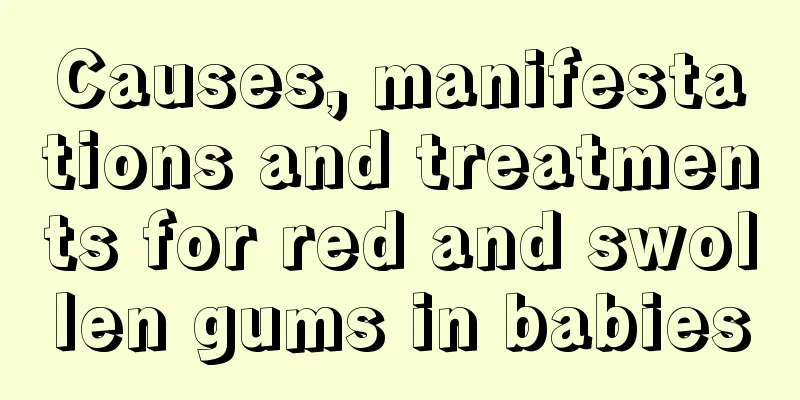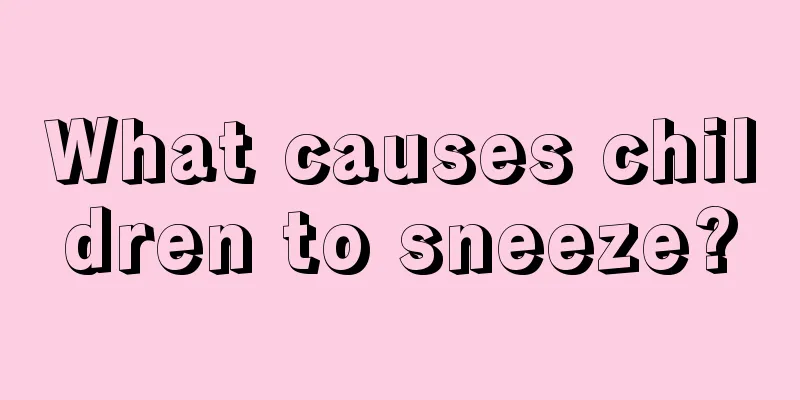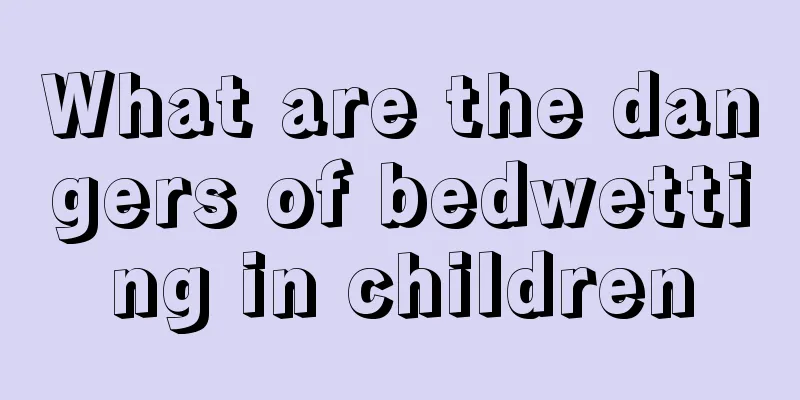Causes of drooling in infants and young children
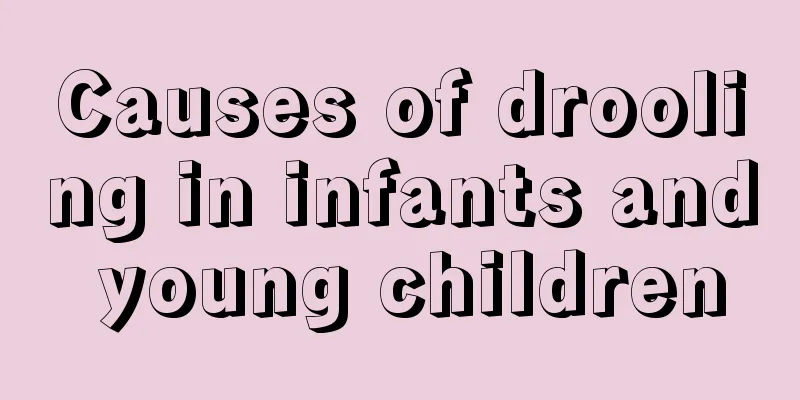
|
Drooling in infants and young children is a relatively common disease, but if this disease exists for a long time, it will cause harm to the bodies of infants and young children. Therefore, for many parents, if their children have long-term drooling, they must pay attention to it. The following content introduces the reasons in detail so that you can have a comprehensive understanding. Drooling in children is more common in infants around 1 year old, often occurring before or after weaning. It is a disease characterized by excessive drooling. Drooling is common between 6 months and 3 years old and is mostly normal. Generally speaking, infants and young children under one year old will drool because of their small oral cavity volume, large saliva secretion, and the stimulation of gums caused by teething. As the baby grows and develops, the drooling phenomenon will gradually disappear around the age of 1. If your baby is still drooling after the age of 2, it may be an abnormal phenomenon, such as cerebral palsy, congenital dementia, etc. reason When suffering from oral mucosal inflammation and neurological diseases such as nerve paralysis, medullary paralysis, sequelae of encephalitis, etc., it is a pathological phenomenon caused by excessive saliva secretion or swallowing disorder. Because the baby's mouth is shallow and cannot control the saliva in the mouth, the salivary glands are not well developed in the neonatal period. After the fifth month, saliva secretion increases. At six months, the teeth erupt and the mechanical stimulation of the trigeminal nerve in the gums increases saliva secretion, resulting in a little more drooling. These are all physiological phenomena and should not be regarded as pathological. examine As the baby grows older, the depth of the mouth increases, the baby can swallow the excess saliva, and drooling disappears naturally. Whether drooling for a long period of time or a short period of time, it will cause erosion at the corners of the mouth. The skin of the lower jaw is often soaked in saliva, the skin becomes red, eczema or the epidermis is damaged and ulcerated, and secondary bacterial infection may occur. If your baby still drools when he is 2 to 3 years old and all his teeth have grown, you should be careful that your baby may have diseases such as inflammation of the oral cavity and pharyngeal mucosa, and you need to take him to the hospital for examination and treatment. Children drool and cry and are restless, refuse to eat, and cry more severely when eating or have a fever. At this time, you should carefully check the oral mucosa, tip of the tongue, and cheeks for ulcers. Ulcers can cause pain and increased salivation leading to drooling. Ulcers should be treated as soon as possible. Long-term drooling will cause harm to the health of infants and young children, so as parents, after understanding the reasons introduced above, you must treat it as soon as possible with the correct method, because long-term drooling means that there is a problem with your child's body. Only through comprehensive treatment as soon as possible can the child's long-term drooling be improved as soon as possible. |
<<: Children's nutritional diet recipe steps
>>: What to do if your baby has cold limbs
Recommend
What's going on with the small red pimples on the three-year-old baby's face?
Being a parent is a blessing. When you become a p...
What to do if your child is too lazy?
With the continuous improvement of living standar...
Is urobilinogen I jaundice?
When talking about jaundice, many people will imm...
Side effects of fever-reducing injections for babies
When many babies have a high fever, doctors will ...
What to do if your baby hiccups? 6 ways to solve it
Hiccups themselves do not have any adverse effect...
Introduction to baby seborrheic dermatitis
Many friends may not know that seborrheic dermati...
What should I do if my four-year-old child stutters?
Generally speaking, children start to learn to sp...
What are the reasons why children sweat a lot?
Sweating is a normal physiological reaction of th...
What is Edwards syndrome?
Edwards syndrome is a very common chromosomal tri...
What are the clinical manifestations of craniosynostosis?
Craniosynostosis is a common growth and developme...
Things to note when planning your baby's diet
When the baby is ten months old, we should pay sp...
What is the best way for children to lose weight?
Many people have a misunderstanding of children&#...
What is the treatment method for spleen deficiency in children?
If a child suffers from spleen deficiency, it is ...
Treatment for children's bedtime cough
Nowadays, the incidence of children coughing befo...
What are the dangers of iron deficiency anemia in infants?
Anemia is a common disease. It can occur in anyon...


